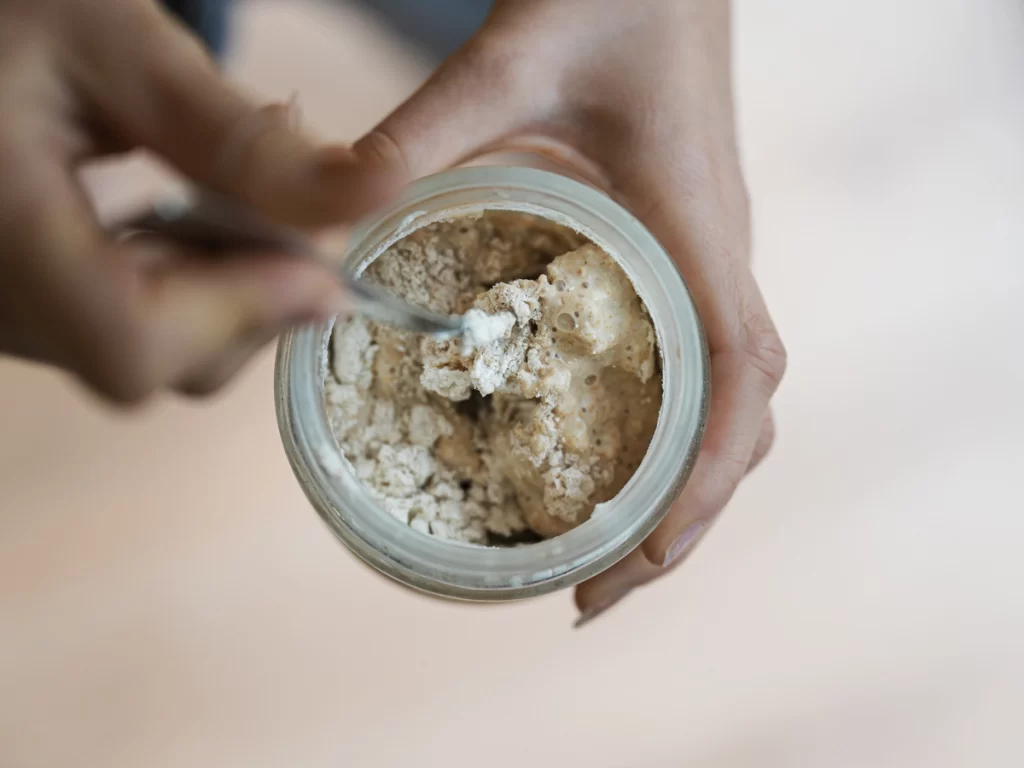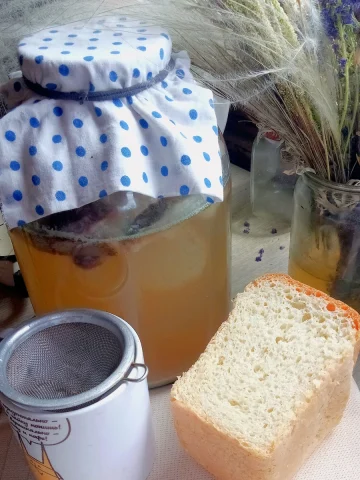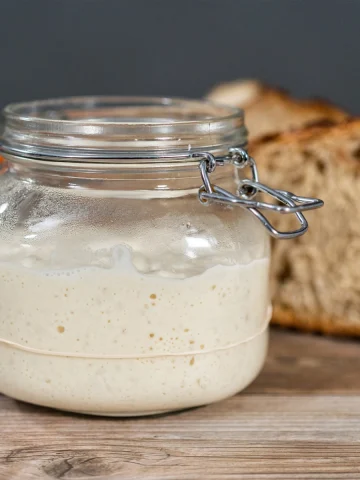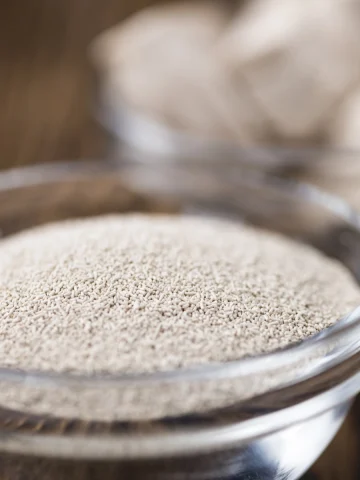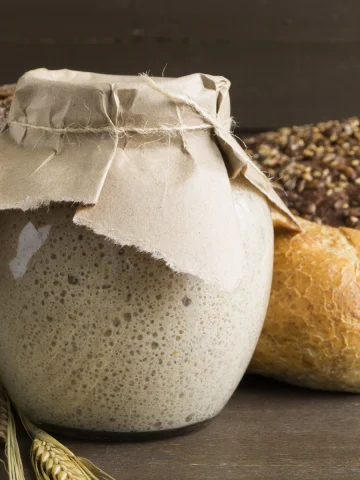Reviving a sourdough starter for making a new batch of bread is relatively simple. However, there are a couple of special conditions where it can be a little more complicated. I'll share with you how to revive a "dead" starter and revive a large batch of sourdough starter.
Are you unsure if your sourdough starter has gone bad or is unable to rise a loaf of bread? Then continue on.
Check the Sourdough Starter For Mold
Take a closer at the starter and discard it immediately if you see mold, or it has a slight pink color or smells musty. These are all signs that bacteria have overtaken the yeasts, and it has gone bad.
Related Topic: How to Make a Sourdough Starter, What Makes Sourdough Sour
How To Revive a Dormant (Dead) Sourdough Starter
If the starter passes the test, stir the liquid back into the mix, or pour it off. Mixing it back in can help keep the hydration levels correct, but it can be poured off too.
Remove the saved sourdough starter from the refrigerator and allow it to rest at room temperature for 3-4 hours.
Place ¼ cup of the old sourdough starter into a clean jar.
Store the leftovers in the refrigerator as a backup.
Add ¼ cup of water and mix well.
Then feed it ½ cup all-purpose and mix well.
Cover with plastic wrap or a towel, and sit at room temperature.
Repeat
Repeat the feeding twice daily, approximately every 12 hours
When you repeat, first discard ½ of the amount of starter.
Again, you can save ½ in the refrigerator as backup or toss it out.
Be Patient
An old neglected sourdough starter can take 24 hours or longer to show signs of life, such as bubbling. Compared to a robust and regularly-fed starter, which will start to rise within a few hours of feeding it.
Discard again
Next, stir the starter and remove approximately half a cup.
Feed again
Add ¼ cup lukewarm water and a ½ cup of flour, mix well, and put the starter back in a warm place.
The starter will tell you when it's ready – once it rises and falls again.
Repeat a third feeding as needed, especially before baking bread.
Look for signs it has fully reactivated; it will double in size faster and more vigorously than when it originally came out of the refrigerator.
The revived sourdough starter is ready to use when it smells pleasantly yeasty and sweet (rather than sour) and doubles in volume 8 to 12 hours after a feeding.
Take ½ of the starter and use it to make bread. Return the other half of the sourdough starter to the refrigerator.
Related: 5 Signs Sourdough Starter is Ready to Bake With
Related Topic: Buyers Guide for the Best Long Toaster for Sourdough Bread, Brod Taylor Folding Bread Proofer Review
How to Make a Large Batch of Starter
Do you have a recipe for a large amount of sourdough starter? Here is how you can grow a batch of starter in several phases.
Follow the procedure for reviving the starter under normal conditions. Remember to return ½ of the starter to the refrigerator after it has been woken up.
After the initial waking period, double the starter every four hours.
Repeat until you have the desired quantity of starter.
What is a sourdough starter?
A sourdough starter called levain is a fermented dough filled with natural wild yeast and a bacteria called lactobacilli. It is the starter that makes sourdough bread rise.
Like most bread recipes use an active dry yeast to make the dough rise, sourdough stater does the same for sourdough bread.
There are 50 million yeasts and 5 billion lactobacilli bacteria in every teaspoon of starter dough. It's an actual living thing.
Don't be afraid; for over 5,000 years, people have made bread by mixing flour and water, waiting for it to ferment, and then using it as leavening.

